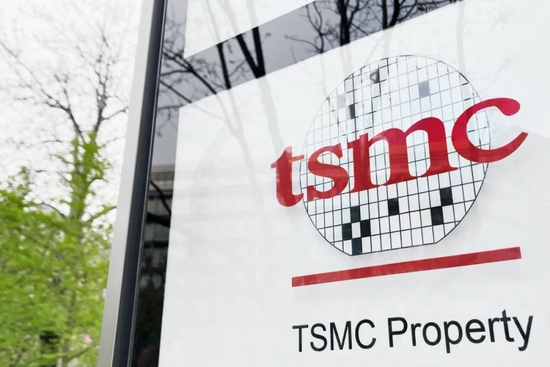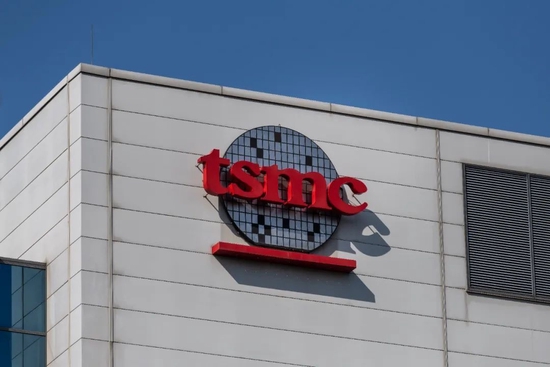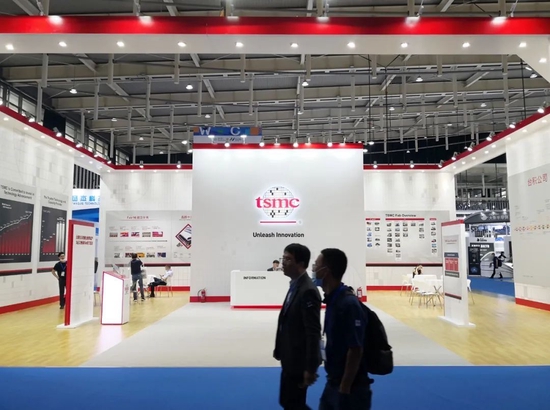writing / Liu Zheming
Edit/ Li Wei
The downturn and chill in the global consumer electronics market have been transmitted to TSMC, the world's largest chip foundry.
This month, TSMC received the most orders from Apple, Qualcomm, Nvidia, MediaTek and other customers. Media reported that MediaTek cut orders by 20%, and Apple's high-end chips A15 and A16 cut orders by 40% to 50%. In the face of customers' order cutting, TSMC even encouraged employees to take vacations and close four EUV lithography machines to reduce production.
The market situation is really not optimistic: the latest research report released by Jeffery, an American investment bank, said that the iPhone 14 did not save the market downturn. Last week, iPhone sales in China fell 27%, which is also the iPhone continued to be depressed for three consecutive weeks; In the third quarter, the global shipments of Samsung and Xiaomi dropped by 8% year on year, OPPO and vivo dropped by more than 20%, and the shipments of Glory in the Chinese market also dropped by 17%
Therefore, although TSMC announced record quarterly profit growth, the market did not buy it. By the end of November 1, 2022, TSMC's share price was $61.58 per share, and its market value had dropped by more than half from a high point. At the beginning of this year, TSMC's share price once exceeded 142 US dollars per share, with a market value of more than 720 billion US dollars. TSMC was ranked among the top ten companies with a market value in the world, comparable to Nvidia.
TSMC management also expressed concern about the future on the financial report conference call: The whole semiconductor industry may decline in 2023, "TSMC is not immune". The company tightened its capital expenditure this year, reducing it by about 10% to maintain it at $36 billion. Three months ago, TSMC just said that its capital expenditure in 2022 would be closer to the bottom of the range of $40 billion to $44 billion.
Last week, Wei Zhejia, vice chairman and CEO of TSMC, thanked employees for their hard work in the past three years in an internal letter, and encouraged them to get along with their families more and continue their efforts after a vacation. Although no layoffs were made, This internal letter is still interpreted as a cold blow to TSMC.
 Source: Visual China
Source: Visual China Other semiconductor companies are also on this bumpy roller coaster.
According to Intel's third quarter financial report, Intel's third quarter revenue was $15.338 billion, down 20% year on year, and its net profit was $1.019 billion, down 85% year on year; Samsung Electronics expects that the operating profit in the third quarter will drop by nearly one-third compared with the same period last year; Nvidia reported an astonishing 51% decline in its second quarter earnings; AMD cut its third quarter revenue by $1.1 billion.
Domestic IC start-ups also have a hard time. Although some investors had predicted that the chip industry under high valuation would eventually usher in a reshuffle period, the bad news came earlier. IC chip startup Nuolin Technology declared bankruptcy after completing round B financing of 200 million yuan and defaulting on employees' wages for two months; ARM CPU startup Qilingxin Technology also went bankrupt and stopped operation.
Wang Jia, a semiconductor industry practitioner, told Chinese Entrepreneurs: "How hot was the chip in the first two years? It can be said that it was burning with fire. But now? Let's spend the winter together."
However, whether from the perspective of TSMC's revenue growth or profit growth, just weak consumption may not be enough to explain investors' concerns and the meaning behind its "winter".
Farewell to short "madness"
It is hard to say when the inflection point of the industry will come, but to sum up the complex development of the semiconductor industry in this year, Pat Gelsinger, CEO of Intel, used the word "dramatic".
A year and a half ago, due to supply chain disruption and blockchain industry development, Goldman Sachs estimated that as many as 169 industries around the world were affected by lack of core. Whether it's a car size chip or a NVIDIA graphics card, the price has soared. Among them, a NVIDIA RTX3090 video card was fired up to 25000 yuan.
Trapped in chips, some auto chip companies even offered to increase the price by 20% in order to increase TSMC's auto chip production capacity. Since then, TSMC has sent price increase letters to chip design enterprises for many times, and the gross profit has gone up all the way. From January 2023, TSMC will again comprehensively raise the OEM price by 6%.
But now, TSMC is no longer receiving orders in a rush, but cutting orders.
On October 31, it was reported from the supply chain that the chaos of full semiconductor inventory had intensified, and the order cutting storm had spread to wafer foundries, and the leading TSMC could not hold on. Since the third quarter, the top ten customers have successively cut orders, especially MediaTek, Nvidia and AMD, whose order reduction rate/delayed order pulling strength exceeded expectations.
Wei Jiazhe said at the TSMC financial report conference that compared with the same period of the previous three years, some of the company's production capacity will not be fully utilized in the fourth quarter. In recent months, sales of smart phones and personal computers have declined, the market has been weak, and customer product plans have been delayed. He predicted that TSMC's production capacity would be affected in the fourth quarter of this year and the first half of next year.
The contraction of the world's largest chip manufacturer to "survive the winter" has undoubtedly released a signal: The short period of crazy growth has already ended, and the downward cycle is continuing.
An investor analyzed with China Entrepreneur that chip is a cyclical industry, and it will go through the process from lack of core to overcapacity, while the demand brought by the consumer electronics epidemic has been overdrawn in advance.
Cai Lixing, CEO of MediaTek, also expressed a similar view at the briefing: high inflation has affected consumer confidence in recent months, and challenges to the overall economy have increased the uncertainty of market demand, leading to a decline in chip demand.
Future Horizons, a British semiconductor market research company, even predicted that, The semiconductor industry is heading for the biggest recession since the Internet bubble in 2000, which is also one of the biggest recessions in the history of chip manufacturing.
 Source: Visual China
Source: Visual China But not everyone agrees with such a "pessimistic" view.
Pat Kirsinger estimated that the chip industry will nearly double in ten years. Today's output value is about 600 billion dollars, and ten years later, the figure will be 1.1 trillion dollars. So, Fundamentally, the chip industry is still a long-term growth cycle. However, in the long cycle, there are also some small cycles.
"You have seen the slowdown of the global supply chain economy for the first time. However, this is only one of the cycles, against the background that the industry will double in ten years. Even if we have to make short-term adjustments and price changes, we must continue to build long-term factories." Pat Kirsinger said. Intel expects that the uncertainty of the global economy will last until 2023. Intel plans to cut $3 billion in 2023 and cut costs by as much as $10 billion by 2025.
The management of domestic chip giant SMIC International also predicted that this cycle adjustment would last at least until the first half of next year. But it is certain that the demand growth of the integrated circuit industry and the trend of global regionalization will remain unchanged, Although there are short-term adjustments and uncertainties in facing international problems, the long-term logic of adhering to local manufacturing remains unchanged.
Out of cycle dilemmas
In fact, among the poor performance of chip manufacturers, the growth of TSMC's financial report is really eye-catching.
In the third quarter, TSMC's consolidated revenue was NT $613.14 billion, up 47.9% year on year; Net profit was NT $280.87 billion, up 79.7% year on year; Diluted earnings per share were NT $10.83, up 79.8% year on year; The gross profit margin is 60.4%, the operating profit margin is 50.6%, and the net profit margin is 45.8%.
Behind such good performance, TSMC's share price has reached a two-year low. An investor told China Entrepreneur that what investors really worry about is not only the weak consumption, but also the uncertain prospects faced by TSMC involved in the US restrictions on Chinese semiconductors.
 Source: People's Vision
Source: People's Vision On October 7 local time, the United States introduced a series of new regulations to prohibit the sale of certain chips made with American equipment to China. In addition, the US government has also included 31 Chinese companies, research institutions and other groups in the so-called "unverified list", limiting their ability to access certain regulated US semiconductor technologies.
In the revenue composition of TSMC, more than 70% comes from customers in North America, and only 8% comes from mainland China, If its customers, such as Nvidia, are affected by the ban, the final results will also be transmitted to TSMC.
However, for TSMC, the new US sales ban affects whether its performance can guarantee growth, but for some domestic chip companies, it is about their survival.
"The US ban means that domestic GPUs, CPUs, AI chips that need advanced manufacturing processes may not be able to accumulate current chips. However, SMIC is unable to provide such an advanced process for the time being, and the development of these chips will be greatly affected. " The above analysis of investors“ The purpose of the United States is to lock up China's advanced manufacturing processes, For example, logical 14nm and DRAM 18nm maintain the gap between China and the United States. "
"The policy you see now is basically to maintain or expand the gap between China's strength and that of the United States or Europe," Pat Kirsinger said frankly when talking about the US chip bill.
Wang Jia's company also relies on TSMC for contract manufacturing. She said that at present, the mass production of chips has not been affected because there is no need for a particularly advanced process, The high-end AI chips are really affected. On October 23, it was reported that TSMC had suspended the production of advanced silicon chips for a domestic GPU chip start-up company to ensure compliance with US regulations.
Wei Zhejia also said on the financial report call that the new regulations target the supply of very high-end applications such as artificial intelligence and supercomputers. "Therefore, our preliminary assessment is that the impact on TSMC is limited and controllable". When asked about the long-term strategy with mainland China, Wei Zhejia said that the company would continue to serve "all customers in the world" while "complying with all rules and regulations".
The entrepreneurial logic of Chinese chips has always been to start from low-end substitution and gradually move up. In the context of controllable supply chain in the previous two years, a group of Chinese engineers returning from the United States began to try to break through the high-end and break monopoly.
Wu Qiang, CEO of Houmo Smart, believes that the new wave of chip entrepreneurship is different from 2016
In 2018, driven by the restriction of people and policies on chips, entrepreneurship in the domestic chip field reached a peak, and more than 200 chip start-ups were established. But more and more enterprises have disappeared. According to enterprise survey data, from 2018 to 2021, there were 715, 1294, 1397 and 3420 chip related enterprises in China that were revoked or cancelled. In the first eight months of 2022, the number will reach 3470.
At the same time, capital is also decreasing. According to the data of IT Orange, in 2021, China's chip semiconductor industry will receive 686 capital financing, with an investment and financing amount of 201374 million yuan; In the first half of 2022, China's chip semiconductor industry received 318 capital financing cases, and the amount of investment and financing obtained was only 79.746 billion yuan, down sharply.
Gartner's latest forecast shows that the global semiconductor revenue is expected to increase by 7.4% in 2022, far less than 26.3% in 2021. In 2023, the total revenue of the semiconductor market will decline by 2.5%. In the face of the sluggish market, a round of brutal fighting is inevitable among more than 2000 chip design enterprises in China, and the survival situation of chip start-ups will become more difficult.



















